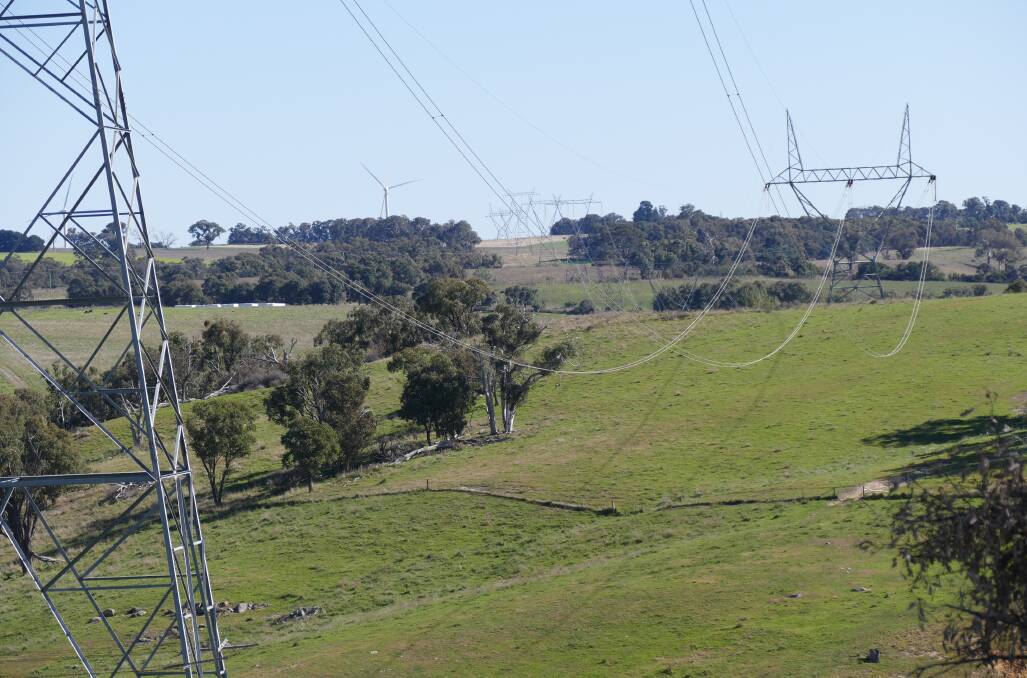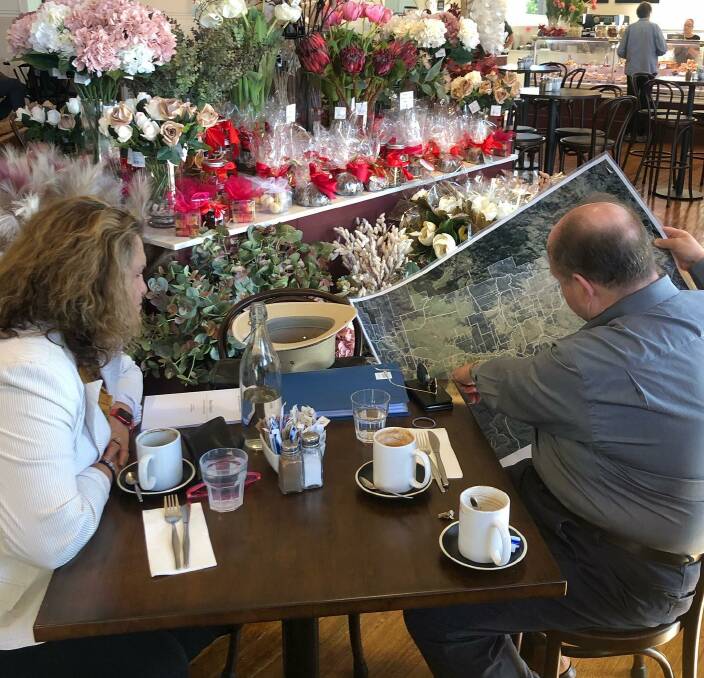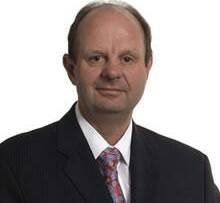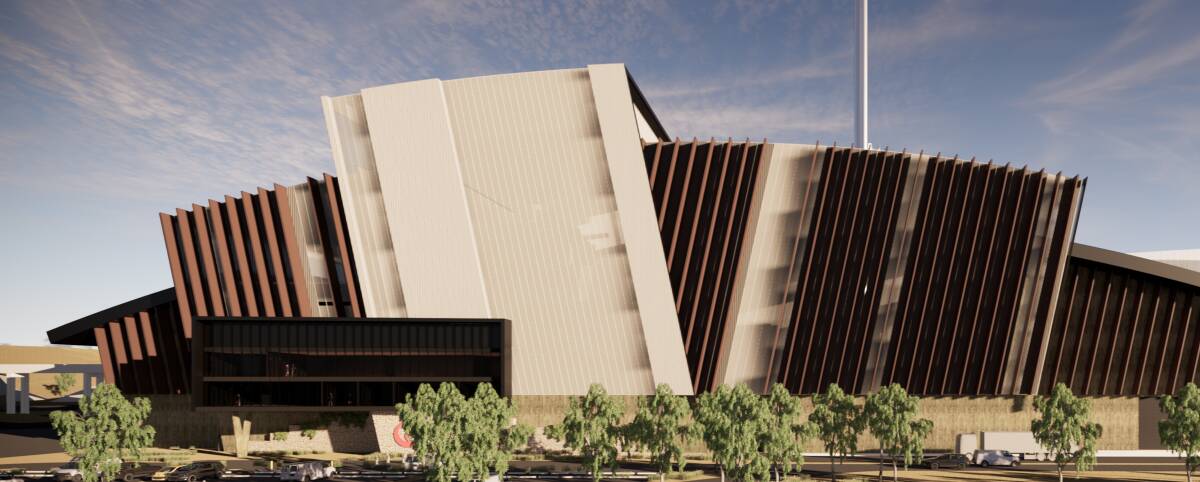
Goulburn MP Wendy Tuckerman has pressed the importance of proper planning and community consultation on the region's major energy projects in a recent meeting.
Subscribe now for unlimited access.
$0/
(min cost $0)
or signup to continue reading
Mrs Tuckerman met with Australian Energy Infrastructure Commissioner Andrew Dyer in Goulburn last week.
READ MORE:
They discussed several large projects, including TransGrid's plans for the HumeLink transmission line through the region, wind farms and Veolia's waste to energy proposal near Tarago.
"It was a good chance to talk about concerns from my point of view and how his role will help in those consultations," Mrs Tuckerman said.
Mr Dyer's role was expanded from National Wind Farm Commissioner in March to encompass other energy projects such large-scale solar farms, battery storage facilities and transmission lines.
He refers complaints about these projects to authorities and helps to ensure they're addressed, as well as promoting best practice on planning, development and operation.
Members of the HumeLink Alliance, opposed to TransGrid's 360km 500-kilovolt overhead transmission line through Crookwell and Taralga districts have already met with Mrs Tuckerman.
They have called on the company to place the line underground to minimise impacts on "environment, amenity, lifestyle, agriculture, property values, regional development and tourism."

The towers would stand 65 metres tall.
The MP said TransGrid was looking at these issues, including the corridor, but the proposed route remained a concern, especially around Bannaby.
Mr Dyer spoke to Bannaby and Bannister property owners during his visit. He has made representations to TransGrid on residents' behalf.
HumeLink Alliance members Russell Erwin and Andrea Strong were among them. Mr Erwin said they stressed the need for TransGrid to prove the project's long-term efficiency and worth to the community.
"There is someone at least willing to listen. We were able to outline our arguments and we will re-enter the fray after the Christmas break," he said.
Fellow Bannister property owner, Christine Hughes, said HumeLink took no account of the fact farmers could not use drones and GPS equipment as a result of the transmission line.
"It's a big disadvantage because we use drones to check stock and water," she said.
"It will make farming less efficient and leave us stuck with 20th century technology for evermore."
New planning guidelines
The state government has moved to restrict large-scale wind and solar projects from being built within 10km of a commercial centre, or within 5km of residential land. It applies to the regional growth centres of Albury, Armidale, Bathurst, Dubbo, Griffith, Orange, Tamworth and Wagga Wagga.

The government says these areas are "at risk of encroaching renewable energy development" and visual and agricultural impacts must be considered before approval is granted.
Mrs Tuckerman said this policy work was underway but she wanted similar guidelines for transmission lines that dictated where they were located and how they could support the electricity grid.
"My electorate has plenty of renewable energy. I'm not sure how much more it can take. We don't want to become saturated," she said.
In October, Goulburn Mulwaree Council asked to be considered as one of the regional cities in the State Environmental Planning Policy (Infrastructure) amendment. This was due to its growth and the number of renewable energy projects in the area.
However an updated draft large-scale solar energy guideline issued on December 17 did not include Goulburn Mulwaree for extra consideration. The amendment would nevertheless guide planning for state significant solar projects.
Mrs Tuckerman said she also spoke to Mr Dyer about Veolia's proposed $600 million waste to energy project and how it could be regulated to ensure that material fed into the facility was safe for human, animal and environmental health.

She told The Post she was heartened by Mr Dyer's responses and level of experience.
Meantime, Goulburn Mulwaree Council general manager Warwick Bennett argued more consideration should be given to the impact of renewable energy projects on rural communities.
"For example, there are 250,000 solar panels going to landfill every year that can't be recycled or re-used," he said.
"We are also dealing with wind farms going on rural properties that are not rated because there is no category. But if you put up a coal fired power station at Breadalbane it could be rated industrial."
At Parkesbourne, secretary's environmental requirements (SEARS) have been issued for CWP Renewables' 600 megawatt solar farm. Terrain Solar is also proposing to build a 150MW solar farm at 740 Carrick Road. Mr Bennett said the council wouldn't receive any extra rate income for road and waste impacts.
Moreover, councils had no say on the impact of tall wind turbines on the environment.
"How do you think they would go in Sydney? If they are so wonderful, why not put them on Sydney Harbour?" Mr Bennett asked.
"Why put them in regional Australia where they have to compete with a 500kV transmission line going through the middle of communities?"
The GM said the council supported renewable energy but had raised these matters with the Canberra Region Joint Organisation of Councils and Regional Cities NSW.
Do you have something to say about this issue? Send a letter to the editor. Click here for the Goulburn Post


